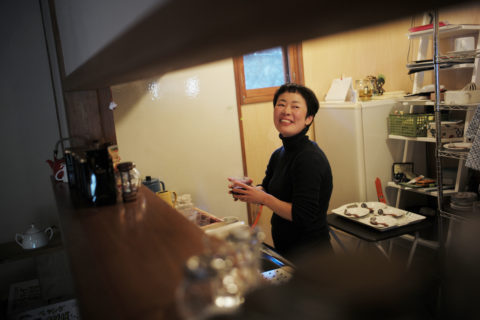
Vol.33 NakagawaWhen opened the mountain,
people gathered. It brought a smile.
Let's maintain the mountains and revitalize the economy with the community currency. This is the 3rd year since such an effort of the “wood station” started in Nakagawa-mura.
It was the scene of multi-generational exchanges as drawn in a picture. On this day, 16 people, from veteran forester who are nearly 80 years old to a wood craft artist, and hunting girl in their 20s, gathered at the wood storage space "Woodstock" in the Misato area in the northeastern part of Nakagawa-mura. Some people are taught how to use a chainsaw, others are filled with dream about how to use wood, and some consult about the forests they maintain. I feel that each of them is involved in this place with their own fun and satisfaction. The is definitely a sight that could not have been seen without the wood station. The thought made my heart hot.
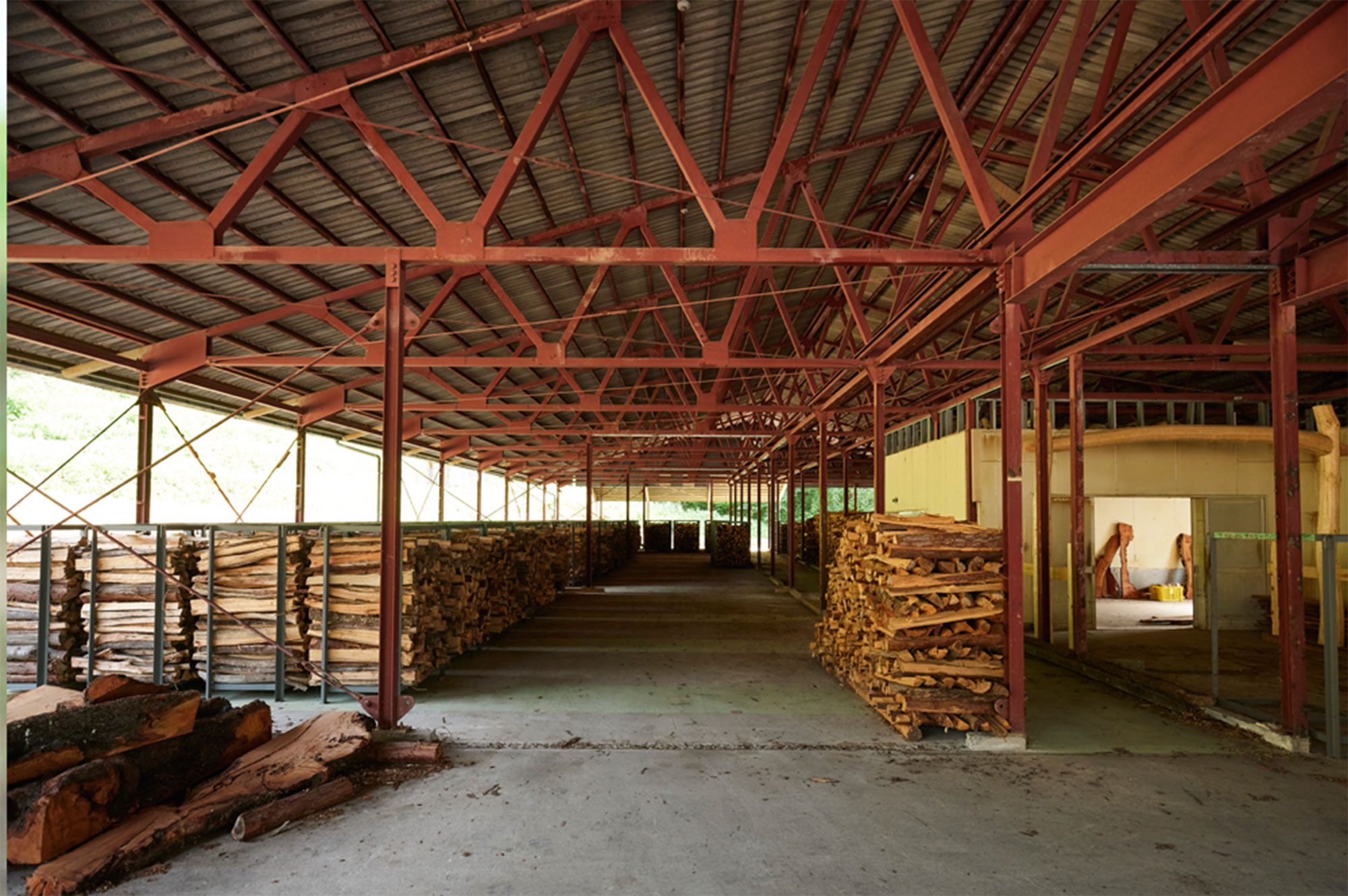
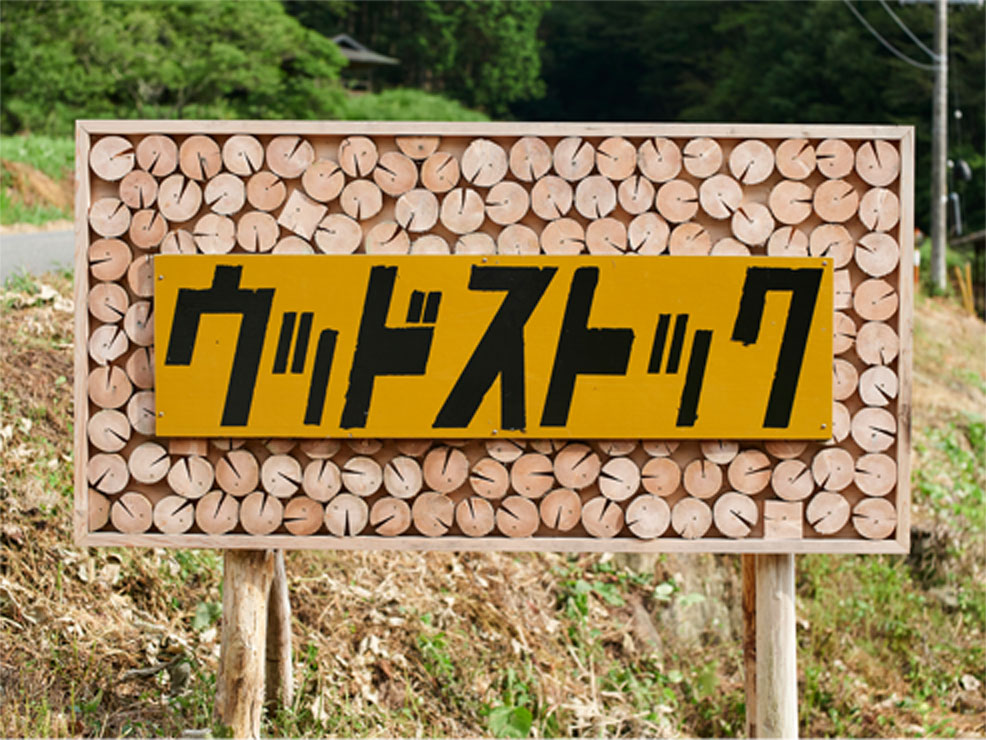
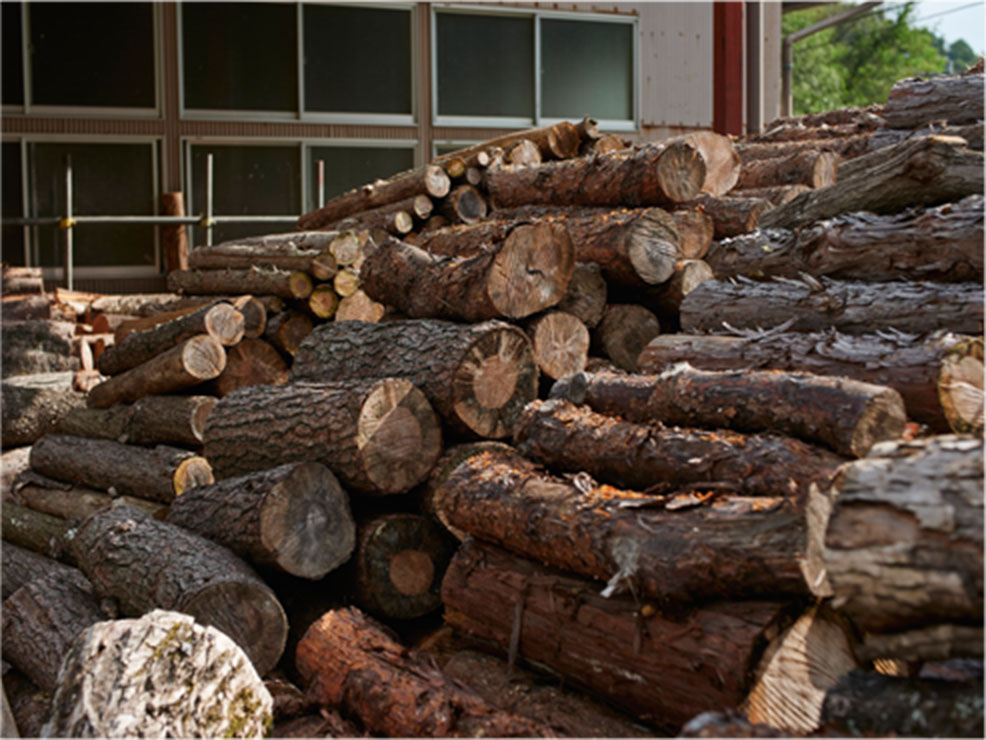
Have you ever heard of the name, the wood station? This is a mechanism of "accepting forest remaining woods and forest thinnings from forests at the area and paying in local currency" and an effort that is spreading throughout the country so that they try to bring vitality to the devastated forests at the area. Started around 2009, there are about 80 wood stations currently active. Most of them are run by voluntary autonomous organization set up by volunteers in each region.
It was around 2017 when Nakagawa-mura focused on this effort. Masato Miyazawa, chairman of the Shinshu Nakagawa Wood Station Executive Committee and a forester, looks back on those days. "Around that time, the research committee on woody biomass using village trees at the initiative of the village was launched. Then, it is a beginning that I heard that Kenji Niwa, who coordinates the wood station project throughout the country, would hold a lecture meeting in a nearby town, and I joined with a few members of the committee."
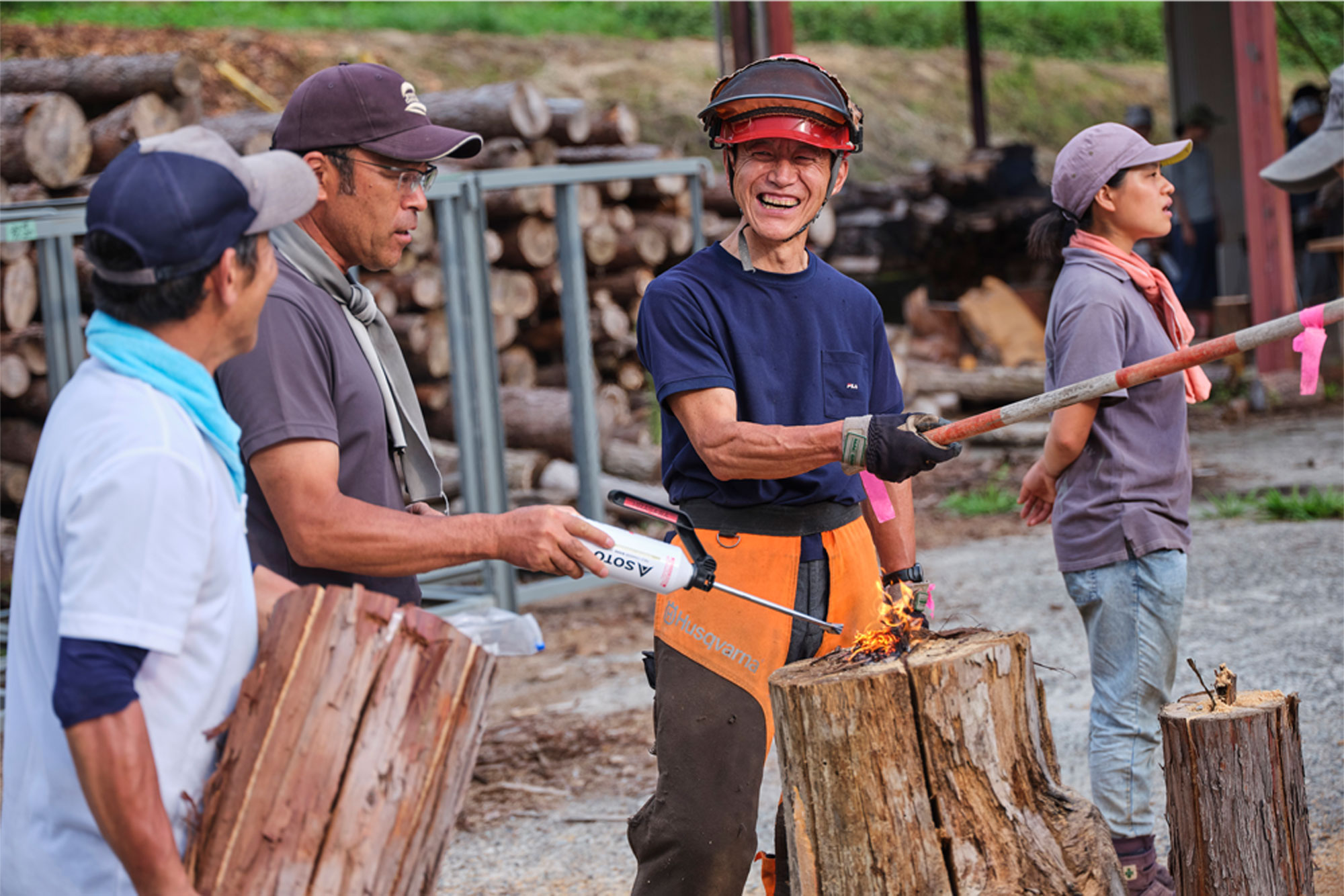
This is a social experiment. It's not matter if making a mistake, so let's try anyway. With such a call by Kenji, who was invited to the village as a coordinator, people gradually gathered from mountain owners at the area to younger generations who are interested in mountains, and local construction company executives. The opening station ceremony was held as early as October 2018, but "the light footwork of public administration and local community" supported the realization more than anything," says Miyazawa.
First of all, the village decided the introduction of a "firewood boiler" in order to boil the hot water in the big communal bathhouse at the accommodation facility "Bogakuso". This made the main purchase and utilization prospect of the lumber received clear. As a use destination of the community currency which is a merit for the tree supplier side, at the call of Vice Chairman Shingo Miyashita, who is also participator as a representative of the local chamber of commerce, 24 shops such as restaurant, cleaning shop, automobile maintenance company, etc. in the village agreed with this. They immediately represented cooperation.
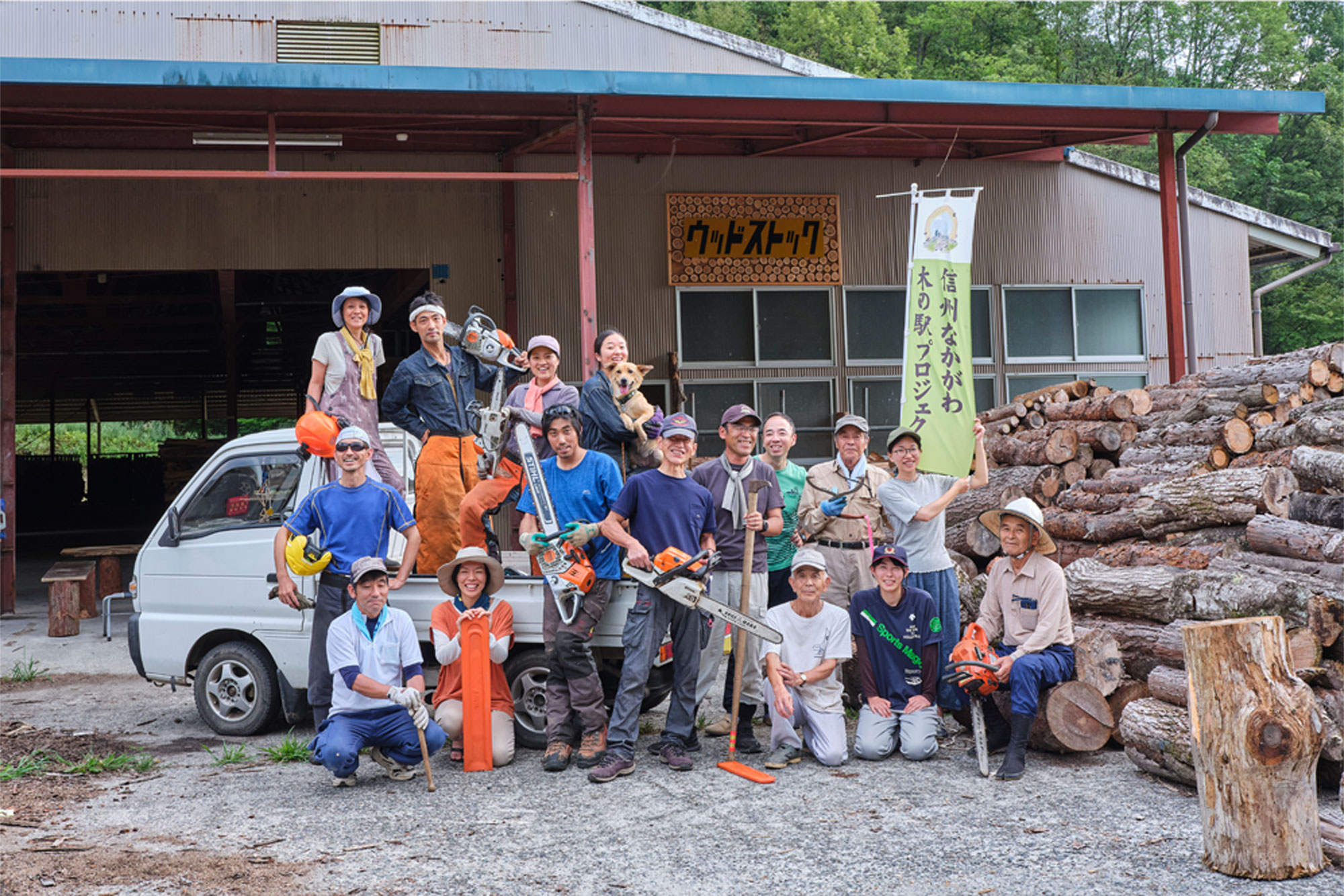
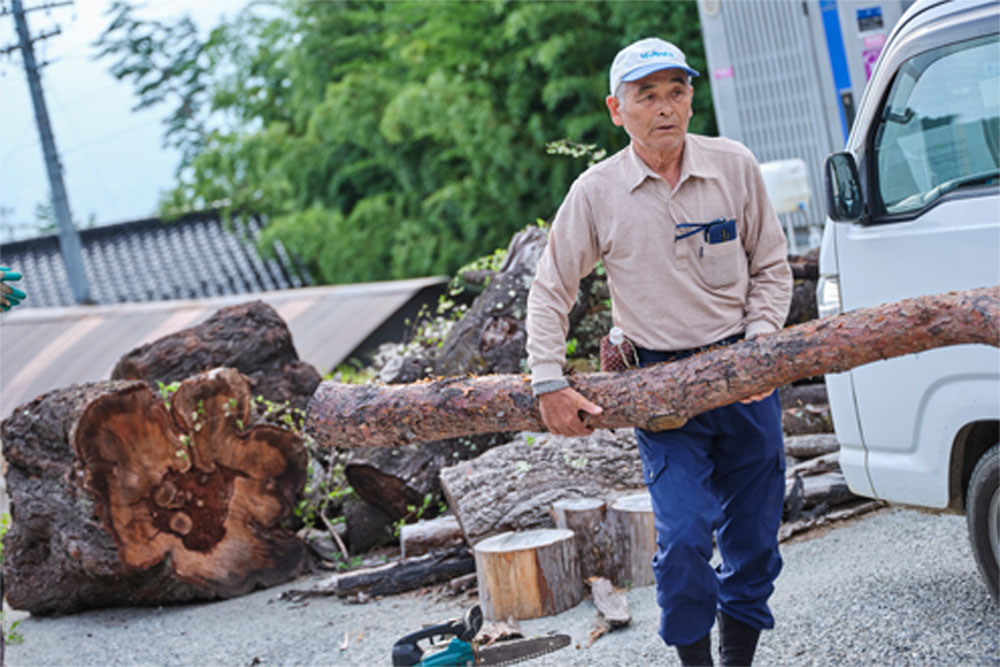
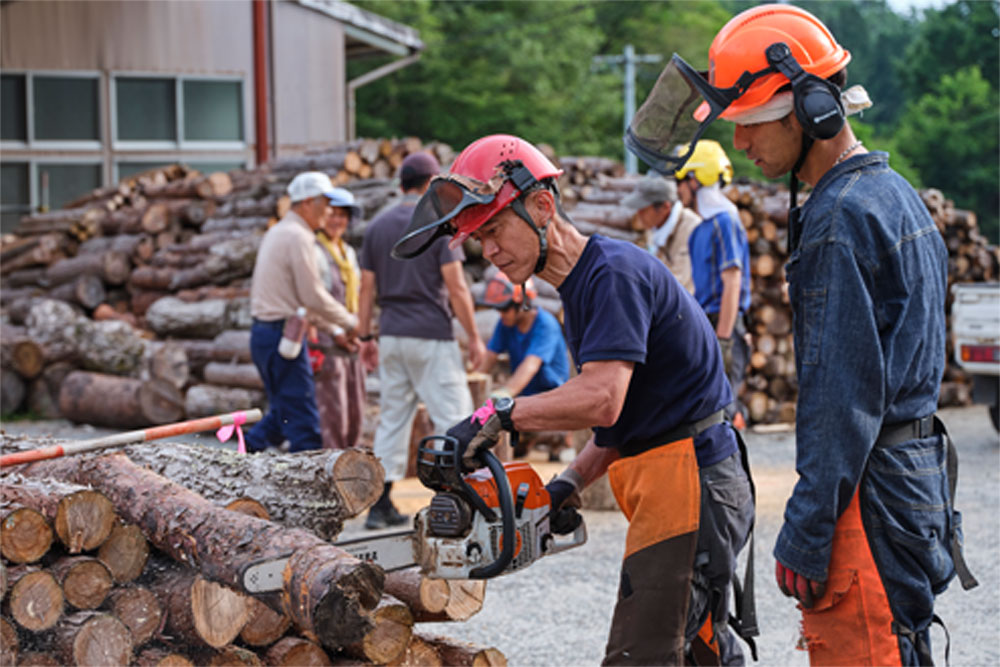
"Kenji was also surprised because it is rare that the community currencies can be used at so many stores from the beginning," (says Miyazawa). 2000-3000 Ira worth (1 Ira = 1 yen) of the community currency satoyama ticket "Ira" is issued per carring out trees as much as the amount of approximately one light truck. "Let's drink with a light truck and a chainsaw," which has become the watchword at the wood station all over the country, has become a reality immediately here, too.
Shingo Saito moved from Kyoto to want to work related to the forest. He studied architecture at university, but as he learned the depth of the wooden architecture, he became interested in the material of wood itself. His long-held desire came true and he is currently working on a forestry, but he says that the wood station has another charm. “I think that mountain-related jobs carry risk, so it's a closed world. But at the wood station, even non-professional people can get together. Not only people who want to try it from now on, but also people who are just interested in mountains may be able to be successful. I feel that there is a great possibility because there is a place where everyone can talk about the mountain.”
TEXT: Mikiko TAMAKI / PHOTO: Kenta SASAKI / ENGLISH TRANSLATION: Yuiko HOSOYA & Chika NAKANISHI / DESIGN:EXAPIECO, INC

インタビューは季刊「日本で最も美しい村」よりの抜粋記事です。
